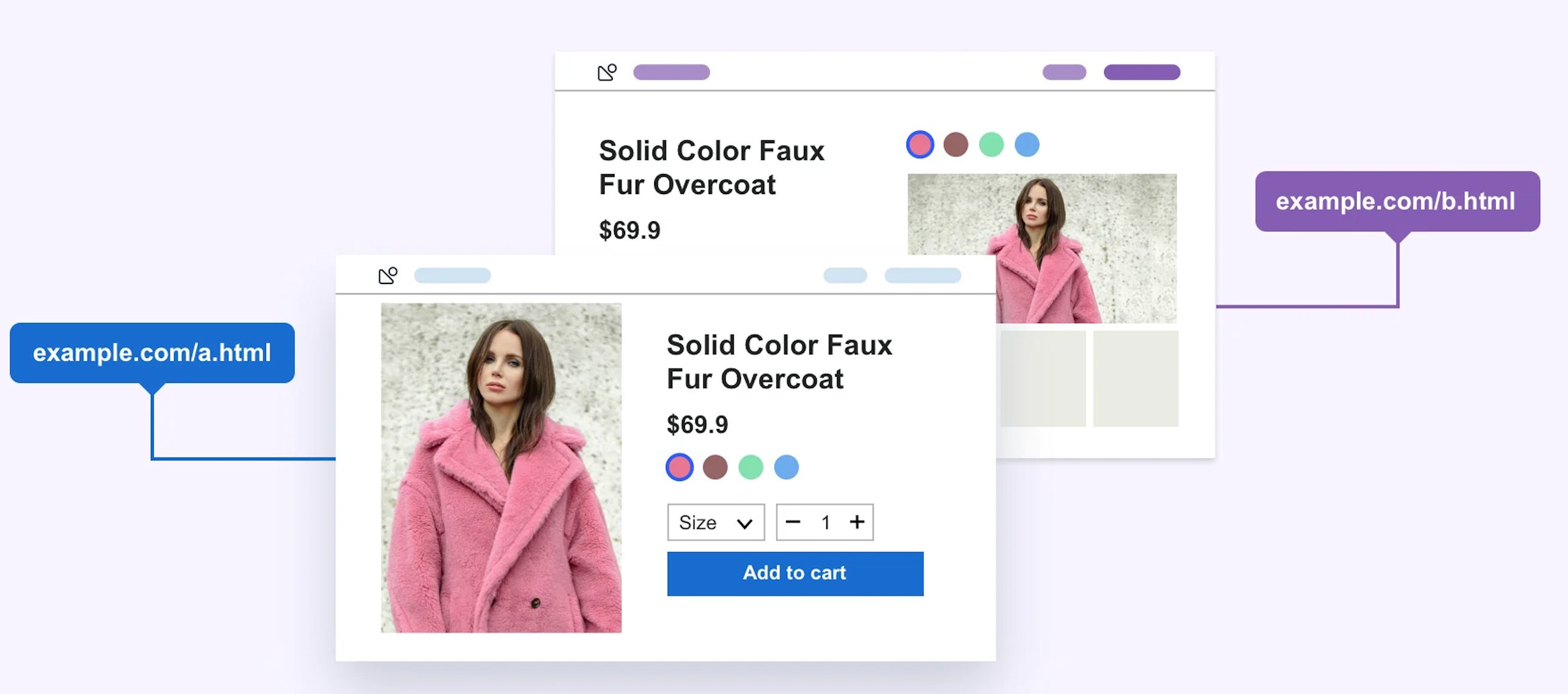Split testing, also known as A/B testing, is a method used to compare two versions of a webpage to determine which one performs better. The process involves dividing the audience or traffic into two or more groups and exposing each group to a different version of the content. The goal is to identify which version produces the desired outcome, whether it’s higher conversion rates, more clicks, or better user engagement.
For instance, if you want to test two different variations of your product page. In version A, the call-to-action button is prominently displayed in red, while in version B, it is in green. The website can track user interactions and conversions by conducting a split test to determine which color scheme leads to higher sales.
This experimental approach allows businesses to make data-driven decisions, optimizing their content based on real user behavior and preferences.

Advantages of Split testing
Data-driven decision making
Split testing allows businesses to make decisions based on real data rather than assumptions or intuition. By testing variations, you can understand what resonates best with your audience.
Improved conversion rates
Identifying and implementing changes that lead to higher conversion rates is one of the primary benefits. Whether it’s a call-to-action button, headline, or layout, split testing helps optimize for better results.
Enhanced user experience
Understanding user preferences through split testing can lead to improvements in the overall user experience. This, in turn, can lead to enhanced consumer satisfaction and loyalty.
Cost-effectiveness
Instead of making sweeping changes based on guesswork, split testing allows you to incrementally improve elements, potentially saving time and resources in the long run.
Different types of split testing
A/B testing
A/B testing involves comparing two versions (A and B) of a webpage to determine which one performs better based on a specific metric, such as click-through rates or conversion rates.
For example, a company is testing two different versions of its homepage to see which one results in a higher conversion rate. Version A has a traditional layout with a prominent call-to-action button, while Version B has a carousel showcasing different products.
Multivariate testing
Multivariate testing involves testing multiple variations of different elements simultaneously to find the best combination that yields optimal results.
For example, an e-commerce website conducts multivariate testing on its product page. It tests variations of the product image, product description, and the placement of customer reviews to identify the combination that maximizes user engagement and conversions.
Split URL testing
Split URL testing compares completely different URLs or webpage structures to determine which one performs better in terms of user engagement or conversions.
For example, an online travel agency is split URL testing two different booking processes. One URL follows a single-page booking format, while the other follows a multi-step process. The agency aims to discover which format leads to higher completion rates for bookings.
Also, watch the video to learn how to set a split test on VWO:
To delve deeper into split testing, you can explore this informative article on split testing.
Conclusion
Alright, let’s wrap it up! In the world of digital optimization, where every click counts, split testing emerges as the compass guiding businesses toward success. The journey from assumptions to data-driven decisions is paved with invaluable insights gained through A/B testing, multivariate testing, and split URL testing.
VWO stands out as a top A/B testing platform, earning the trust of numerous global brands like Domino’s, HBO, eBay, and Disney. Packed with essential features, it provides a comprehensive solution for designing and executing tests.
Boost your revenue, tackle cart abandonment, and craft exceptional digital experiences that drive conversions—all with minimal reliance on your development team.
Start a 30-day all-inclusive free trial today to explore the features and capabilities of VWO.










